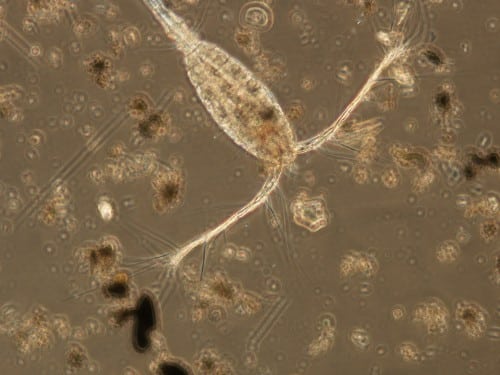A "brilliant and impressively motivated" researcher, who suffers from learning disabilities and other disabilities, is the lead author of a study that reveals a discovery at an international level in a prestigious journal * The study, published in the journal PLoS One, reveals that for the first time animals have been found that carry tiny plates in their bodies the size of a quarter of a wavelength of light

Yuval Bar, who according to her lecturers is a "brilliant, smart and impressively motivated" researcher, who suffers from learning disabilities and other disabilities, and who made it difficult for her in her studies and grades during her undergraduate studies (and were far from faithfully reflecting her abilities), is the main author of an international level discovery, which was carried out at the Faculty of Natural Sciences at Ben-Gurion University of the Negev and was published this weekend (January 17.1.2014, XNUMX) in the prestigious journal PLoS One.
The research, in which Prof. Nadav Shasher and Prof. Yossi Rosen are partners, found, for the first time, that animals carry tiny plates in their bodies the size of a quarter of a wavelength of light. These are animals that are found in plankton (plankton is the name given to the accumulation of tiny organisms - that swim and mainly drift - that reside in the waters of the oceans and seas, as well as in freshwater reservoirs) and that contain in their bodies tiny plates the size of a quarter of a wavelength of light.
"These plates, which are common in many optical devices, transform a light beam with straight polarization into circular polarization. This means that the electromagnetic field vectors of the light enter the plate in a fixed direction and leave it moving in a spiral motion. To the best of the researchers' knowledge, the creatures tested are the first known to carry these plates," the researchers note.
Prof. Nadav Shasher: "Third year students in natural sciences can carry out a research project in which they integrate research in the laboratories. However, Yuval's grades did not allow her to join the project. But not someone as motivated as Yuval Bar will give up on research, and within the program for marine biology and biotechnology, she will find a proper home and place."
According to her lecturers at Ben-Gurion University, she carried out her own project (while assigning a separate course number), combined the fields of biology and physics, identified a unique biophysical phenomenon, brought together researchers from two fields of thought and even established contact with a Japanese researcher specializing in the field.
"The result was a discovery at an international level," says Prof. Shasher, "concerning the behavior of light when it passes through transparent animals. The result was so surprising that it was sent for an opinion to a large number of judges - leading researchers in the world in the field of animal vision. Needless to say, their enthusiasm for the results and the article led some of them to waive their right to anonymity and sign their opinions on their behalf," says Prof. Shasher.

7 תגובות
As someone who did read the article:
A. The plates are between 60 and 80 nanometers thick, which is much smaller than a quarter of a wavelength.
B. The whole section of a quarter of a wavelength is a delay created between two light rays at different speeds moving through the crystal (think of a car that drives fast and a car that drives slowly). So for the sake of comparison, let's say that when the two cars reach the finish line, one car is ahead of the other car by a quarter of a car length. In light waves this creates interesting optical phenomena, for example circular polarization.
third. It's because of double breaking only in Hebrew it doesn't sound good. The correct terminology is birefringence, which is something completely different from reflection or refraction.
d. You don't need crystals a thousand times bigger, and you don't need to place them at special angles.
God. The article suggests several reasons why the plankton needs it. Those who are really interested can read:
http://www.plosone.org/article/info:doi/10.1371/journal.pone.0086131
For anyone who doesn't understand optics
The article is confused and full of nonsense
In order to turn linearly polarized light into circularly polarized one must use crystals 1000 times larger than the wavelength and place them at special angles I wonder who signed the document in addition to Prof.
And why does plankton need to change the polarization of light, a meaningless thing for him
What's more, if this were true after 100 planktons the direction becomes completely random like the article
The description is a bit confusing, because 'size' sounds like a standard (micrometer, nanometer), and 'quarter-wave size' sounds like something measured in angstroms (tenths of a nanometer)...
A quarter wavelength of what wavelength? Each color of light has a different wavelength.
The discovery itself is interesting, but when "quarter wavelength" was mentioned, and then circular polarization - I scratched my head skeptically.
Transmitting a quarter of wavelengths (throughout the entire visible spectrum) creates an "anti-reflex" result, just like the coating on eyeglasses - part of it is reflected back and part continues on.
In order to achieve circular polarization, the light must be passed through a birefringent crystal (one way to create circular polarization).
If I did not understand correctly, I would appreciate your clarification 🙂
Well done, good luck!!
Every discovery is at an international level. And regardless of course, HH!